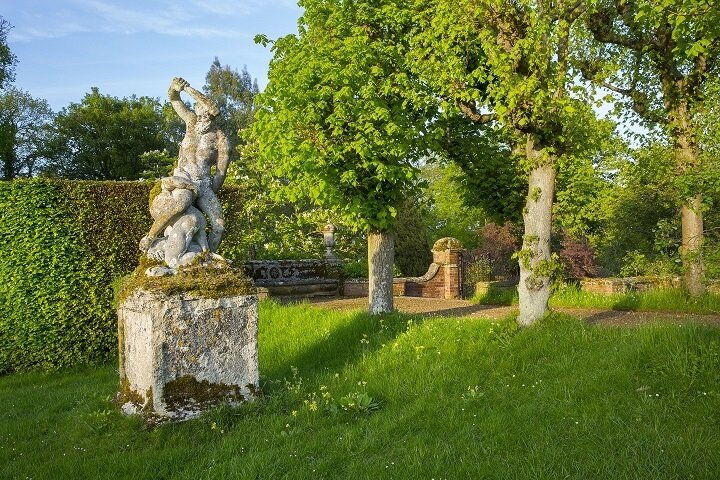
Map of garden below












Landscape garden laid out in 1720, covering 50 acres, with statues and temples. Lovely seasonal displays of flowers.
St Paul’s Walden Bury is a Grade 1 listed garden laid out in the early 18th century and has kept the original concept of a formal woodland garden, with temples, statues and ponds. It reflects the idea that a garden should be in harmony with the surrounding landscape: thus allees and avenues flow out into the countryside, while features of the countryside, such as the church, are drawn into the design, and trees are left to grow naturally.
The formal garden was influenced by French 17th century architects, such as Le Notre, and is based on the classic patte d’oie (goose foot) design, in which avenues radiate from a focal point. The long avenues are lined with clipped beech hedges: the original plantings of clipped hornbeam were replaced in the 1930's to the same design. One of the features of the garden is that the visitor frequently comes upon a surprise. There are unexpected views of temples and statues, hidden glades and a secluded terraced theater.
There is an interesting collection of plants in the more recent woodland garden, and wild flowers are encouraged. There are displays of snowdrops from February, then daffodils and cowslips. April and May are the best months to see the spectacular rhododendrons, magnolias and azaleas in full flower, as well as lovely bluebells. June and July bring the woodland paeonies and lilies, while carpets of wild orchids have naturalized here in recent years. In the autumn there are displays of colchicums (autumn crocuses).
There is also a fascinating collection of statues. See “Charity” at the top of the drive, depicting a woman with 3 children, attributed to John Cheere (brother of Henry Cheere). This was one of the Queen Mother’s favourites and a copy stands in the garden of her old home, Royal Lodge. On either side of the lawn are the statues known as “The Wrestlers”. The left statue is a copy of Giambologna’s “Hercules and Antaeus”, the right one is a copy of Michelangelo’s “Samson and two Philistines”. The pair has recently been copied by the National Trust to display at its property at Stowe. Further into the garden you will see “Venus and Adonis” by F Scheemaker, a companion piece to a statue by L Delvaux in the Victoria and Albert Museum.
There are a number of further statues, some displayed as a focal point of a vista, others in secluded groves.
